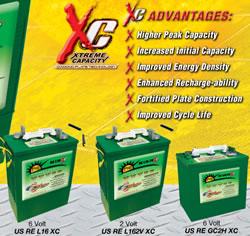OutBack Power Announces Strategic Supply Agreement with Near Prime Technologies to Support U.S. Manufactured Battery Systems
This partnership unites OutBack Power's leadership in reliable distributed energy with C4V's proven battery technology and Near Prime Technologies' domestic manufacturing capability.
Trina Storage Completes 5MWh Large Scale Fire Test Under Maximum Severity Conditions, Demonstrating System-Level Safety Performance
The test occurred under the full supervision of internationally recognized third-parties, including TÜV Rheinland and a leading North American fire protection and life-safety engineering firm, Hiller.
Fuel Cell Electric Vehicle Market Poised to Hit USD 45.42 Billion by 2033 as Hydrogen Mobility Gains Global Momentum
The Fuel Cell Electric Vehicle Market (FCEV Market) is set to reach USD 45.42 billion by 2033, growing at a 36.7% CAGR, driven by hydrogen innovation, infrastructure expansion, and global zero-emission goals transforming clean mobility worldwide.
Electric Vehicle Market to Reach USD 3.65 Trillion by 2033 as Global Electrification Accelerates
The Electric Vehicle Market is projected to hit USD 3,651.1 billion by 2033, growing at 24.8% CAGR, driven by clean mobility policies and battery innovation.
Nexeon Announces First Silicon-Carbon Plant is Production-Ready
Gunsan plant is the first volume production facility globally for silicon-carbon materials dedicated to enhancing lithium-ion battery performance.
Inlyte Energy Completes Factory Acceptance Test of First Full-Scale Iron-Sodium Battery Storage System
Validation testing marks major product readiness milestone ahead of early 2026 field installation at Southern Company's test site in Wilsonville, Alabama
The 11th World Battery & Energy Storage Industry Expo (WBE 2026)
The 11th World Battery & Energy Storage Industry Expo (WBE 2026)
Date: September 16th-18th, 2026
Venue: Area A, China Import and Export Fair Complex
Address: No.380, Yuejiang Zhong Road, Guangzhou, China
Website: http://en.battery-expo.com/
WITT Gas Highlights MEM+ Gas Mixer Series for Precise Mixing of Popular Gases Across Thermal Processing Applications
Advanced Connectivity and Rapid, Reliable Gas Mixing Optimize Performance
MARSTEK Showcases New VENUS Energy Storage Systems at Solar Solutions Düsseldorf 2025
A key highlight is MARSTEK VENUS G, a stackable 5kW AC-coupled ESS with 500V V-Boost technology. It combines a bidirectional inverter with 10kW peak power, ultra-fast backup switching, and modular capacity expansion from 5kWh to 30kWh.
FranklinWH Joins Holy Cross Energy's Expanded Power+FLEX Program to Advance Home Energy Resilience
New Partnership Offers Significant Rebates and Monthly Bill Credits to Support Community Energy Savings and Grid Stability in Colorado
A Strong and Sustainable European Battery Value Chain is Possible
On 2 and 3 December 2025 in Graz, Austria, the Battery Innovation Days held its fifth edition with great success, with 600 participants onsite and 1000 online, 35 exhibitors, 22 sponsors and over 65 speakers.
Nature's Generator Celebrates Major Milestone: 3,000 Installation Partners Nationwide as Demand for Transfer Switches and MyGrid 10K Surges
This growing network of electricians, contractors, and energy professionals supports the rising demand for clean, reliable, and resilient home power systems.
A New Chapter in Fire Protection: Sungrow SBH Series Passes the World's First UL Solutions' Residential Fire Test
The SBH Series: Residential ESS has achieved a significant milestone by passing the world's first UL 9540B large-scale fire test, conducted by UL Solutions. This achievement highlights Sungrow's industry-leading expertise in thermal runaway management and fire spread control, setting a new global standard for residential ESS safety.
How Cyber Attackers Hack EV Charging Infrastructure
As the world's reliance on clean electricity becomes more commonplace, the need for stronger authentication, encryption and monitoring solutions grows.
Fuel Cell Vehicle Market Set for Explosive Growth: What's Driving the Surge in 2024-2032
With global regulations tightening and hydrogen infrastructure scaling up, the fuel cell vehicle market is projected to soar - rising from USD 2.2-2.79 billion in 2023/2024 to over USD 65 billion by 2032. Explore the key trends, regional dynamics, and market drivers shaping this clean-mobility revolution.
Records 1 to 15 of 2383
Featured Product

U.S. BATTERY RENEWABLE ENERGY SERIES DEEP CYCLE BATTERIES
Our RE Series batteries are designed to provide the highest peak capacity, longest cycle life, and greatest reliability for use in industrial or residential renewable energy applications. Renewable Energy Series batteries utilize the company's exclusive XC2™ formulation and Diamond Plate Technology® to create the industry's most efficient battery plates, delivering greater watt-hours per liter and watt-hours per kilogram than any other flooded lead-acid battery in the market. Our Deep Cycle batteries are engineered to work with solar panels as well as other renewable energy applications.


.jpg)